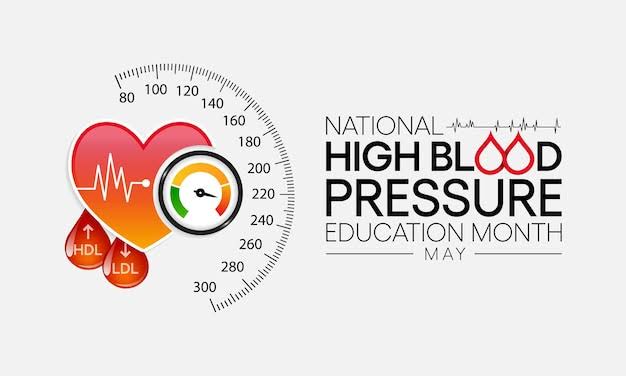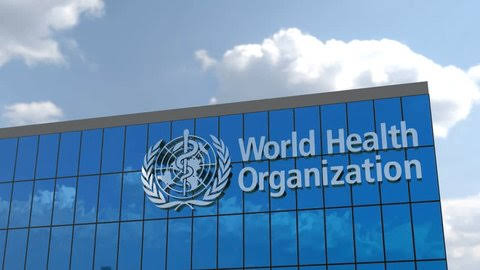High blood pressure (HBP), commonly known as hypertension, is a widespread health condition that affects millions of people worldwide. Often called the “silent killer” due to its lack of noticeable symptoms, HBP can lead to severe complications like heart disease, stroke, and kidney failure if left unmanaged. This comprehensive guide explores the causes, dietary influences, risk factors, age-related considerations, and effective strategies for managing and preventing high blood pressure. Whether you’re looking to understand your risk or seeking ways to control HBP, this post provides detailed, actionable insights to support your health journey.
What is High Blood Pressure?
Blood pressure measures the force of blood pushing against the walls of your arteries as your heart pumps. It’s recorded as two numbers:
-
Systolic pressure (the top number): The pressure when your heart contracts and pumps blood.
-
Diastolic pressure (the bottom number): The pressure when your heart rests between beats.
Blood pressure is measured in millimeters of mercury (mmHg). According to the American Heart Association, the categories are:
-
Normal: Below 120/80 mmHg
-
Elevated: 120-129/<80 mmHg
-
Stage 1 Hypertension: 130-139/80-89 mmHg
-
Stage 2 Hypertension: 140/90 mmHg or higher
-
Hypertensive Crisis: Above 180/120 mmHg (requires immediate medical attention)
HBP often develops silently, with no obvious symptoms, making regular monitoring critical. Left untreated, it can damage blood vessels and organs, increasing the risk of life-threatening conditions.
Causes of High Blood Pressure
Hypertension is classified into two types: primary (essential) hypertension and secondary hypertension, each with distinct causes.
Primary Hypertension
Primary hypertension accounts for 90-95% of cases and develops gradually over time. While no single cause is identified, it results from a combination of factors, including:
-
Genetics: A family history of HBP significantly increases your risk. If your parents or siblings have hypertension, you’re more likely to develop it.
-
Age: As you age, blood vessels lose elasticity, increasing resistance and blood pressure.
-
Lifestyle Factors: Poor diet, physical inactivity, smoking, excessive alcohol consumption, and chronic stress contribute significantly.
-
Obesity: Excess body weight forces the heart to work harder, raising blood pressure.
-
High Sodium Intake: Consuming too much salt causes the body to retain water, increasing blood volume and pressure.
Secondary Hypertension
Secondary hypertension, which affects 5-10% of cases, is caused by an underlying medical condition or medication. Common causes include:
-
Kidney Disease: The kidneys regulate blood pressure by controlling fluid balance and releasing hormones. Conditions like chronic kidney disease can disrupt this process.
-
Adrenal Gland Disorders: Tumors like pheochromocytoma or conditions like primary aldosteronism can cause excessive hormone production, raising blood pressure.
-
Thyroid Disorders: Hyperthyroidism (overactive thyroid) or hypothyroidism (underactive thyroid) can affect blood pressure regulation.
-
Obstructive Sleep Apnea: Repeated pauses in breathing during sleep reduce oxygen levels, stressing the cardiovascular system.
-
Medications and Substances: Birth control pills, NSAIDs (e.g., ibuprofen), decongestants, and recreational drugs like cocaine can elevate blood pressure.
-
Coarctation of the Aorta: A congenital narrowing of the aorta forces the heart to pump harder, increasing pressure.
Risk Factors for High Blood Pressure
Several factors increase the likelihood of developing HBP. These can be divided into non-modifiable and modifiable risk factors.
Non-Modifiable Risk Factors
-
Age: The risk of HBP rises with age. Men are more likely to develop it before age 55, while women’s risk increases after menopause (around age 65) due to hormonal changes.
-
Gender: Men tend to develop HBP earlier, but women catch up post-menopause. Estrogen offers some protection against HBP in premenopausal women.
-
Family History: A genetic predisposition makes you more susceptible. If close relatives have HBP, regular monitoring is essential.
-
Race/Ethnicity: African Americans have a higher prevalence of hypertension and tend to develop it earlier. They may also experience more severe complications, such as kidney disease.
Modifiable Risk Factors
-
Diet: High sodium, low potassium, and diets rich in processed foods contribute to HBP.
-
Physical Inactivity: A sedentary lifestyle increases the risk of obesity and cardiovascular strain.
-
Obesity: Excess weight, particularly around the abdomen, increases blood pressure by taxing the heart and blood vessels.
-
Smoking: Tobacco chemicals damage blood vessel walls, causing them to narrow and raising blood pressure.
-
Excessive Alcohol: Drinking more than one drink per day for women or two for men can elevate blood pressure.
-
Chronic Stress: Prolonged stress triggers the release of hormones like cortisol and adrenaline, which constrict blood vessels.
-
Sleep Disorders: Conditions like sleep apnea increase HBP risk by disrupting oxygen flow and stressing the body.
Foods and High Blood Pressure
Diet plays a pivotal role in both causing and managing HBP. Certain foods can exacerbate hypertension, while others help lower or stabilize blood pressure. Below is a detailed look at foods to avoid and those to embrace.
Foods to Avoid
-
High-Sodium Foods:
-
Examples: Processed meats (bacon, sausage, deli meats), canned soups, salty snacks (chips, pretzels), fast food, and restaurant meals.
-
Why They’re Harmful: Sodium causes water retention, increasing blood volume and pressure. The American Heart Association recommends limiting sodium to 2,300 mg/day, ideally 1,500 mg for those with HBP.
-
Tip: Check food labels for sodium content and opt for low-sodium or no-salt-added versions.
-
-
Sugary Foods and Beverages:
-
Examples: Sodas, energy drinks, sweetened juices, candies, pastries, and desserts.
-
Why They’re Harmful: Excess sugar contributes to weight gain, inflammation, and insulin resistance, all of which can raise blood pressure.
-
Tip: Replace sugary drinks with water, herbal teas, or unsweetened sparkling water.
-
-
Saturated and Trans Fats:
-
Examples: Fried foods, fatty red meats, full-fat dairy, and processed baked goods.
-
Why They’re Harmful: These fats increase cholesterol levels, leading to plaque buildup in arteries, which raises blood pressure.
-
Tip: Choose lean meats, low-fat dairy, and plant-based fats like olive oil.
-
-
Excessive Caffeine:
-
Examples: Coffee, energy drinks, and some teas in large amounts.
-
Why They’re Harmful: Caffeine can cause temporary blood pressure spikes, especially in sensitive individuals.
-
Tip: Limit intake to 1-2 cups of coffee daily and monitor your body’s response.
-
-
Alcohol:
-
Examples: Excessive consumption of beer, wine, or spirits.
-
Why They’re Harmful: Heavy drinking damages the heart and raises blood pressure over time.
-
Tip: Stick to moderate drinking—up to one drink per day for women, two for men.
-
Foods to Include
The DASH (Dietary Approaches to Stop Hypertension) diet is a proven approach to managing HBP. It emphasizes nutrient-rich foods that lower blood pressure. Key foods include:
-
Fruits and Vegetables:
-
Examples: Bananas, oranges, berries, leafy greens (spinach, kale), beets, and carrots.
-
Benefits: These are rich in potassium (which balances sodium), fiber, and nitrates (which relax blood vessels). Beets, for example, contain nitrates that can lower blood pressure within hours.
-
Tip: Aim for 4-5 servings of fruits and 4-5 servings of vegetables daily.
-
-
Whole Grains:
-
Examples: Oats, quinoa, brown rice, and whole-grain bread.
-
Benefits: Fiber supports heart health and helps regulate blood pressure.
-
Tip: Choose whole grains over refined grains like white bread or pasta.
-
-
Lean Proteins:
-
Examples: Fatty fish (salmon, mackerel), skinless poultry, and legumes (lentils, chickpeas).
-
Benefits: Omega-3 fatty acids in fish reduce inflammation and improve blood vessel function.
-
Tip: Aim for 2-3 servings of fish per week and incorporate plant-based proteins.
-
-
Low-Fat Dairy:
-
Examples: Skim milk, Greek yogurt, and low-fat cheese.
-
Benefits: Calcium and vitamin D support blood pressure regulation.
-
Tip: Choose unsweetened, low-fat options to avoid added sugars.
-
-
Nuts and Seeds:
-
Examples: Almonds, walnuts, flaxseeds, and chia seeds.
-
Benefits: These provide magnesium, healthy fats, and fiber, which support heart health.
-
Tip: Consume in moderation (e.g., a small handful daily) due to high calorie content.
-
-
Herbs and Spices:
-
Examples: Garlic, turmeric, basil, rosemary, and ginger.
-
Benefits: These add flavor without sodium and have blood pressure-lowering properties. Garlic, for instance, promotes blood vessel relaxation.
-
Tip: Replace salt with herbs and spices to enhance flavor.
-
Age and High Blood Pressure
HBP can affect people of all ages, but its prevalence and causes vary across life stages:
-
Young Adults (18-39): Hypertension is less common but increasing due to rising rates of obesity, poor diet, and stress. Secondary hypertension, often linked to conditions like kidney disease or hormonal disorders, is more likely in this group. Regular screening is crucial, especially for those with a family history.
-
Middle-Aged Adults (40-64): Primary hypertension becomes more prevalent as blood vessels stiffen with age. Lifestyle factors like inactivity, stress, and poor diet play a significant role. This group should prioritize lifestyle changes and regular checkups.
-
Older Adults (65+): HBP is highly common due to natural aging of the cardiovascular system. Women’s risk rises post-menopause due to declining estrogen levels. Isolated systolic hypertension (high systolic pressure with normal diastolic pressure) is frequent in this age group, as arteries become less elastic.
-
Children and Adolescents: Though rare, pediatric hypertension is on the rise, often linked to obesity, genetic factors, or underlying conditions like kidney disease. Blood pressure in children is evaluated using age-, sex-, and height-specific percentiles.
Complications of Untreated High Blood Pressure
Uncontrolled HBP can lead to serious health issues, including:
-
Heart Disease: HBP strains the heart, increasing the risk of heart attack, heart failure, and left ventricular hypertrophy (thickening of the heart muscle).
-
Stroke: Damaged blood vessels in the brain can rupture or become blocked, leading to a stroke.
-
Kidney Damage: HBP can impair kidney function, leading to chronic kidney disease or kidney failure.
-
Aneurysms: Weakened blood vessel walls may bulge and rupture, causing life-threatening internal bleeding.
-
Vision Loss: Hypertensive retinopathy can damage blood vessels in the eyes, leading to vision impairment.
-
Cognitive Decline: HBP is linked to an increased risk of dementia and memory problems.
Managing and Preventing High Blood Pressure
Effective HBP management combines lifestyle changes, medical interventions (when necessary), and regular monitoring. Here’s a detailed look at each approach:
Lifestyle Changes
-
Adopt the DASH Diet:
-
Focus on low-sodium, nutrient-rich foods like fruits, vegetables, whole grains, and lean proteins.
-
Limit processed foods, sugary drinks, and high-fat items.
-
Example Meal Plan:
-
Breakfast: Oatmeal with berries and skim milk
-
Lunch: Grilled chicken salad with leafy greens, avocado, and olive oil dressing
-
Dinner: Baked salmon, quinoa, and steamed broccoli
-
Snack: Greek yogurt with a handful of almonds
-
-
-
Exercise Regularly:
-
Aim for 150 minutes of moderate aerobic activity (e.g., brisk walking, cycling, swimming) per week, plus 2-3 sessions of strength training.
-
Benefits: Exercise strengthens the heart, improves blood flow, and reduces stress.
-
Tip: Start with small, achievable goals, like a 20-minute walk daily, and gradually increase intensity.
-
-
Maintain a Healthy Weight:
-
Losing 5-10% of body weight can significantly lower blood pressure.
-
Tip: Combine a balanced diet with regular exercise and consult a dietitian if needed.
-
-
Manage Stress:
-
Practice mindfulness, meditation, deep breathing, or yoga to reduce stress hormones.
-
Ensure 7-9 hours of quality sleep nightly, as poor sleep can elevate blood pressure.
-
Tip: Try a 10-minute guided meditation daily to promote relaxation.
-
-
Limit Alcohol and Quit Smoking:
-
Stick to moderate alcohol consumption (one drink/day for women, two for men).
-
Quit smoking to protect blood vessels and lower blood pressure.
-
Tip: Seek support through cessation programs or counseling.
-
-
Reduce Caffeine:
-
Limit caffeine to 1-2 cups of coffee or equivalent daily, especially if you’re sensitive to its effects.
-
Tip: Switch to decaf or herbal teas for a gentler alternative.
-
Medications
If lifestyle changes aren’t enough, your doctor may prescribe medications, such as:
-
Diuretics: Remove excess sodium and water to reduce blood volume.
-
ACE Inhibitors or ARBs: Relax blood vessels by blocking certain hormones.
-
Calcium Channel Blockers: Prevent calcium from tightening blood vessels.
-
Beta-Blockers: Reduce heart rate and cardiac output.
-
Other Medications: Tailored to specific needs, such as alpha-blockers or vasodilators.
Note: Always follow your doctor’s guidance and never stop medications without consulting them.
Monitoring
-
Home Blood Pressure Monitoring: Use a validated, automatic blood pressure monitor to track readings regularly. Record measurements at the same time daily (e.g., morning and evening) for consistency.
-
Regular Checkups: Visit your healthcare provider to monitor blood pressure, assess risks, and adjust treatment plans.
-
Tip: Keep a blood pressure log to share with your doctor for accurate tracking.
Additional Considerations
-
Cultural and Socioeconomic Factors: Access to healthy foods, safe exercise spaces, and healthcare can impact HBP management. For example, low-income communities may rely on affordable, high-sodium processed foods. Community programs and education can help bridge these gaps.
-
Pregnancy and HBP: Conditions like gestational hypertension or preeclampsia require specialized care. Pregnant women with HBP should work closely with their healthcare team.
-
Mental Health: Anxiety, depression, and chronic stress can worsen HBP. Addressing mental health through therapy or support groups is crucial.
-
Sleep Apnea: If you snore loudly, feel tired despite adequate sleep, or have been diagnosed with sleep apnea, seek treatment (e.g., CPAP therapy) to reduce HBP risk.
Conclusion
High blood pressure is a serious but manageable condition that affects people across all ages and backgrounds. By understanding its causes—genetics, lifestyle, and underlying conditions—you can take proactive steps to prevent or control it. Adopting a heart-healthy diet, staying active, managing stress, and monitoring your blood pressure regularly are powerful tools for maintaining optimal health. If you have HBP or are at risk, work closely with your healthcare provider to create a personalized plan that includes lifestyle changes and, if needed, medications.
Empower yourself with knowledge and take charge of your heart health today. Share this guide with friends and family to raise awareness about HBP, and let’s work together to combat the silent killer. If you have questions or need personalized advice, consult a healthcare professional for tailored guidance.
Disclaimer: This information is for educational purposes only and not a substitute for medical advice. Consult a healthcare provider for diagnosis and treatment of high blood pressure.
Join our Whatsapp channel to stay updated always!


